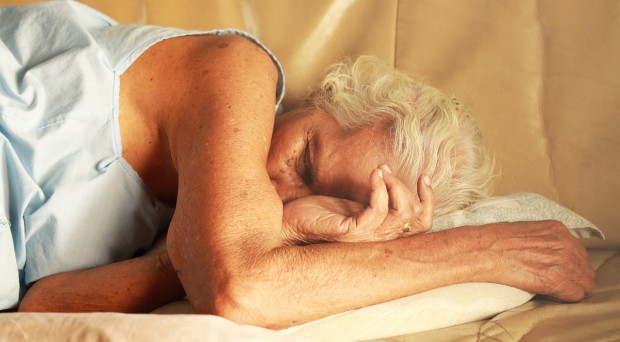
 Irene Higginson qualified in medicine from Nottingham University and has worked in wide ranging medical and university positions, including radiotherapy and oncology, in-patient and home hospice care, the Department of Health (England), and various universities.
Irene Higginson qualified in medicine from Nottingham University and has worked in wide ranging medical and university positions, including radiotherapy and oncology, in-patient and home hospice care, the Department of Health (England), and various universities.
She is Director of the Cicely Saunders Institute, at King’s College London, the world’s first purpose-built Institute of palliative care, integrating research, education, clinical services and support and information.
Irene Higginson is an NIHR Senior Investigator and was in 2013 awarded Fellowship of the Academy of Medical Sciences, for her contribution to the field. She has several active research programmes, leads the MSc, Diploma and Certificate in Palliative Care, supervises several PhD students and is active in teaching.
End of life care is a serious commitment which involves both the patient and carers. Can you tell us more about why you decided to perform this study?
For a long time palliative and end of life care has been neglected and many people have missed out on the best care. We wanted to find ways to improve care for patients and families facing serious life limiting illness, to more closely meet their preferences and needs and empower them.
Our early work consistently found that most people with advanced cancer prefer to die at home. But not all have equal chances to achieve this wish; in fact most people die in hospital. We don’t know enough about what influences this in the clinical setting.
It is also important to know whether dying at home is a better or worse experience than hospital. The jury was out on this question. Existing studies contradicted each other, some suggested dying at home resulted in poorer symptom control for patients and families than hospital, and some found it was better.
Therefore, we decided to examine these two aspects. We wanted to identify the factors influencing the propensity of dying at home rather than in hospital, and to compare important palliative outcomes for patients and families.
We asked the bereaved relatives who had experienced care first hand and found that they really wanted to tell us about their experiences. We gathered very detailed comments and stories. Many thanked us for asking their views, and wanted to know more about the research. I would like to thank them for sharing so honestly their experiences and views with us.
QUALYCARE is now the most comprehensive population-based investigation of factors and outcomes associated with dying at home compared to hospital.
Is the approach towards palliative care similar everywhere?
The approach to palliative care has a common stem but also varies across the globe, between countries and within countries.
The approach to palliative care has a common stem but also varies across the globe, between countries and within countries. For example, palliative care is well developed in some parts of the UK but only 19% of countries worldwide are said to be in a similar situation.
Even within London, where this study took place, we see districts that are relatively well served, whilst others show critical gaps in service provision. There are some commissioners who do not fund expert palliative care services, and out of hours care is patchy. The variation is particularly striking in terms of home care. This is, we think, one of the reasons why there is such variation in the place of death.
The hospice and palliative care movement (which is celebrated tomorrow, the 10th October, as a World Day) is a global movement. There are common principles that guide the work of all those who provide palliative care to patients and families around the globe.
These include focus on the individual needs of the person as a whole, rather than simply on their diseases. Palliative care doctors, nurses and others are expertly trained in the careful assessment and management of symptoms, including pain, psychological, social and spiritual needs, communication and information.
They consider both the patient and their family or those close to them. The World Health Organization’s definition of palliative care establishes this common framework. Perhaps the most important point to be made is that modern palliative care is not only for patients who are dying and at the very end of life, it is increasingly introduced earlier and offers an extra layer of support, working with other specialists and community doctors and nurses.
Could you explain what the main findings of your study were?
QUALYCARE found that when patients died at home, their family reported that they spent their last days in greater peace, nearly always with family around them, and with pain controlled to a similar level to those who die in hospital.
Grief was less intense for their families than for those of patients who died in hospital.
These findings are new. In addition to increasing choice, a home death is associated sometimes with better experiences and outcomes (in terms of peace and grief) for people dying of cancer and for their relatives.
There are no differences in some other aspects, such as pain. This is important. Many people fear to be at home, thinking it may be an impossible burden on the family or lead to more pain. Our study suggests that need not be the case, as long as they are well supported by healthcare services.
We also found what needs to be in place for advanced cancer patients to die at home, if they wish. There were four essential components: patient’s preference for home, family’s preference for home, receiving home expert palliative care, and receiving district nursing/community nursing.
In addition, the propensity of home death increased when the family were aware of incurability and the patient had discussed his/her preferences with them. More GP (family doctor) home visits, and more days taken off work by relatives also, step by step, increased the chances to die at home.
Our findings suggest that making death at home a reality for a patient with incurable cancer is a tangible goal but it requires certain things to be in place early on. This includes discussion of preferences, home specialist palliative care services, GP’s who will also do home visits, and planning so that relatives are able to take time off work.
Failure with any of these may lead to crises and subsequent admissions, leading to an undesired death in hospital, which in turn is less peaceful than can be achieved at home and more difficult for relatives to live with. The latter may be important for their subsequent ability to work and physical and mental wellbeing.
How might this impact future research in the field?
The study is already having an impact. Colleagues are adapting the QUALYCARE methodology to examine the care provided to patients dying elsewhere in England, Northern Ireland, Ireland and in the USA.
Importantly the situation for patients dying from non-malignant conditions may be very different as illness trajectories are less predictable and access to expert palliative care is much lower than for patients with cancer. Thus we urgently need to study the experiences of people with non-cancer conditions and how to improve their care.
Our findings highlight the need to measure family preferences and outcomes, given the crucial role of families in caring for patients at home and in decision-making processes.
Our findings highlight the need to measure family preferences and outcomes, given the crucial role of families in caring for patients at home and in decision-making processes. Families are often missed out of hospital services, and in studies. That is something we hope will change.
Finally, we identified service factors associated with home death. We need to know now which combinations are most cost-effective and most valued by patients and families, including the best and most cost effective ways to provide out of hours expert palliative care in the community. It would be very useful to evaluate more the variation that exists currently, and also to test some demonstration pilots of better care.
Have there been any important milestones during your career?
When I started practicing as a doctor, dealing with people at the end of life was very neglected. In medical school I was taught nothing about palliative care. Many people, including many doctors and nurses, believed that morphine used for pain automatically killed people, was addictive and should be reserved for last hours of life.
Even though there was good evidence that none of this is true, and indeed the opposite – morphine titrated against pain is not addictive, it does not kill people and now we even know that early good palliative care might enable people to live longer – it was difficult to change minds. Unfortunately it still sometimes is, although there are many improvements.
Discovering expert palliative care teams was a milestone for me. It showed me that it could be done better. But perhaps my most important milestone is learning from the patients and families with whom I have worked, clinically and in research.
I am always humbled and amazed by the courage, resilience and fortitude that so many individuals show, even when facing life limiting illness and death. It was so many patients telling me that home was important, that started me wanting to study this.
I could see this didn’t happen often, and this made me want to understand how we should try to make it better. Working with Dr James Hanratty, Dame Cicely Saunders and others in the field was also notable, as was seeing the compassion, skill, dedication and care provided by so many colleagues.
3 Comments